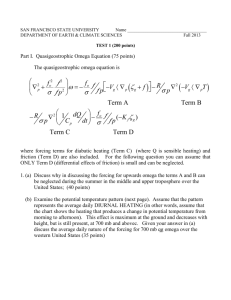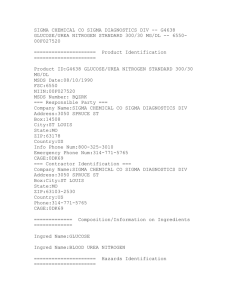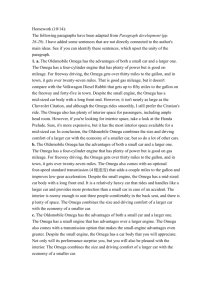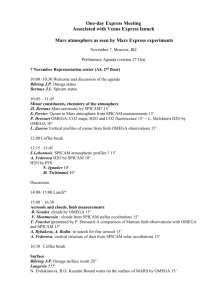ee 2170lab11
advertisement
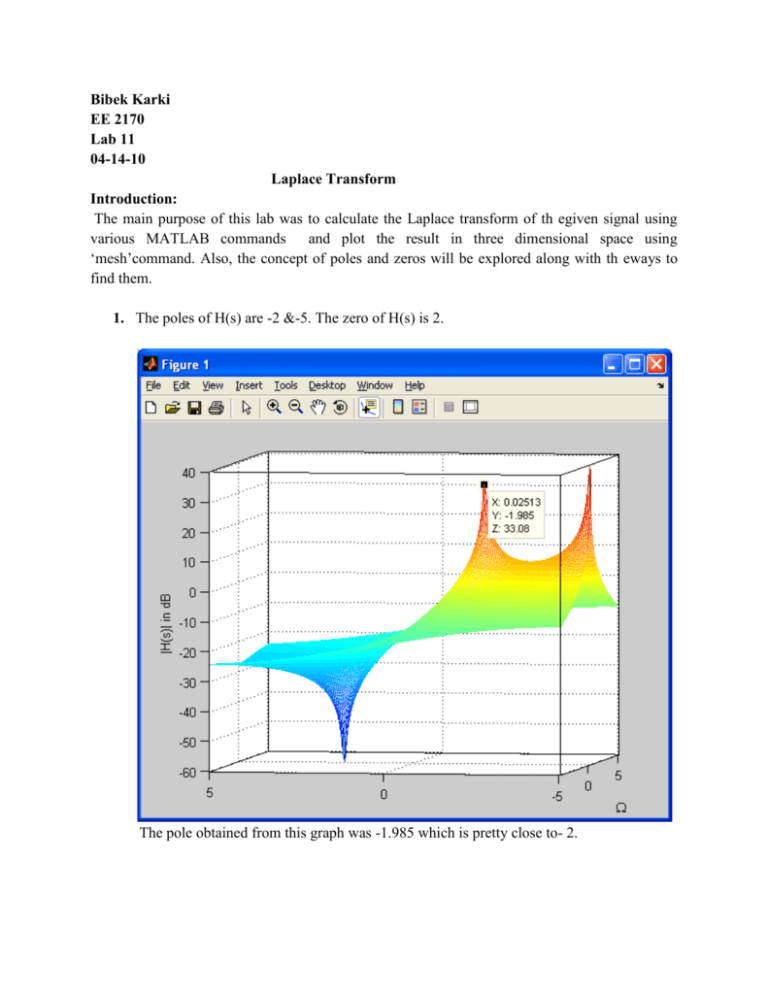
Bibek Karki
EE 2170
Lab 11
04-14-10
Laplace Transform
Introduction:
The main purpose of this lab was to calculate the Laplace transform of th egiven signal using
various MATLAB commands and plot the result in three dimensional space using
‘mesh’command. Also, the concept of poles and zeros will be explored along with th eways to
find them.
1. The poles of H(s) are -2 &-5. The zero of H(s) is 2.
The pole obtained from this graph was -1.985 which is pretty close to- 2.
The value of pole obtained from this is -5 and calculated value was -5 too.
The zero of the polynomial obtained from this graph was 1.985 and calculated value was
2 , which are pretty close.
2. The obtained plot is given below:
The small piece of graph is given below which acts as a lowpass filter.
This is the case because we assumed that sigma=0; thus the value of H(s)= j*omega.
So in the above obtained 3-D graph, if we ignore the value of sigma, we obtain the graph
given above which is the frequency response of the given function ,also frequency
response is athe subset of the Laplace transform. Thus, it acts as a lowpass filter as
suggested from the graph above.
Lab Codes:
clc;
close all;
clear all;
%t = [0 : 0.01 : 100]; % time vector
sigma = linspace(-5,5,200 ); % real part of s
omega = linspace(-5,5,200); % imaginary part of s
for m = 1 : length(sigma)
for n = 1 : length(omega)
s = sigma(m) + j*omega(n); % building 's = sigma + j*omega'
H(m,n)= (s-2)/(s^2+7*s+10);
if abs(real(s)) > 0.05
H(m,n) = 1e-3;
end
%f = exp(-t).*exp(-s*t); % the function inside the integral
%H(m,n) = trapz(t,f); % integral for the Laplace transform
end
end
figure;
mesh(omega,sigma,20*log10(abs(H))) % 3-D plot of H with respect to sigma and
omega
ylabel('\sigma'); xlabel('\Omega'); zlabel('|H(s)| in dB');
box on;grid on;
3. Graph obtained after freqs command:
Lab Codes:
>> b= [1 -2 ]
b = 1 -2
>> a=[1 7 10]
a = 1 7 10
>> figure;
>> freqs(b,a)
>>
The plot obtained from the freq command only has the magnitude of H(s) for omega from 0.01
to 100 (i.e. all positive values) whereas the plot in no.2 gives the value of the magnitude of H(s)
and phase for values of omega from -5 to 5 .Thus, if we combine both plots, it shows that the
given function is the lowpass filter.
4. Lab Codes:
b=[1 -2]
b = 1 -2
>> a=[1 7 10]
a = 1 7 10
>> [r,p,k]= residue(b,a)
r = 2.3333 -1.3333
p = -5 -2
k = []
>>
From calculation we have, values of r = 7/3 and -4/3 respectively and value of k was 0.
Conclusion:
The lab focussed on finding Laplace transform of the given function and use it as the lowpass
filter. We used ‘residue’ to find the various components of the simple partial fractions and the
command ‘root’ to find the roots of the polynomial given in the lab.




